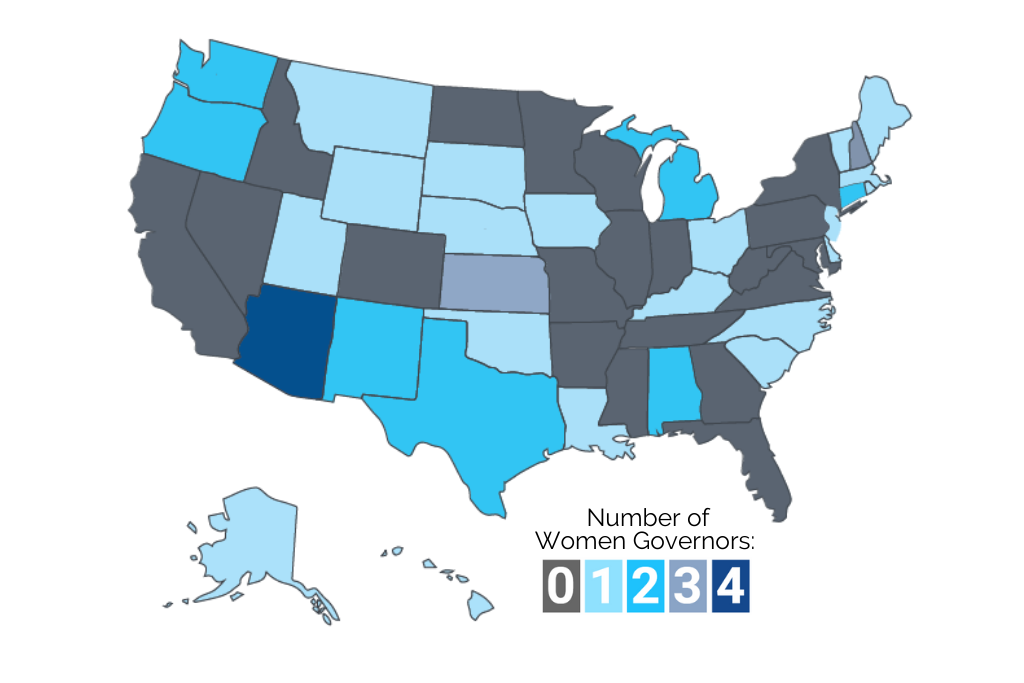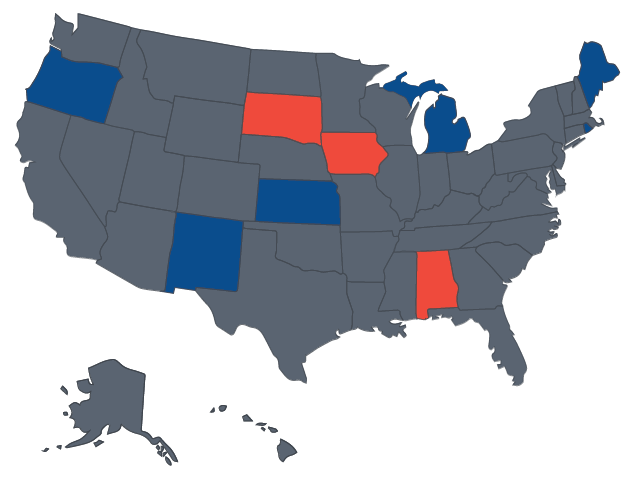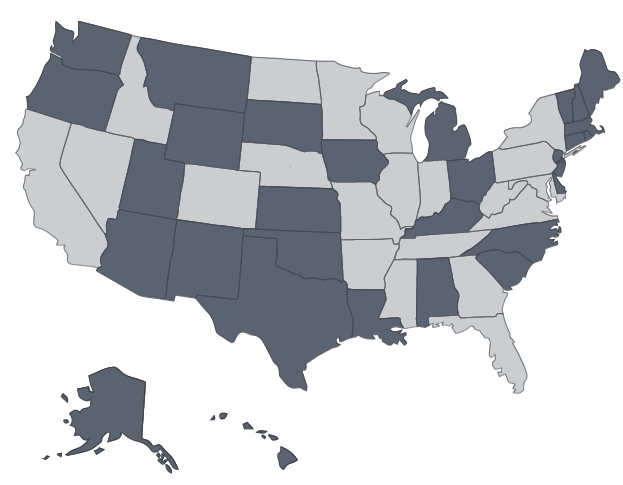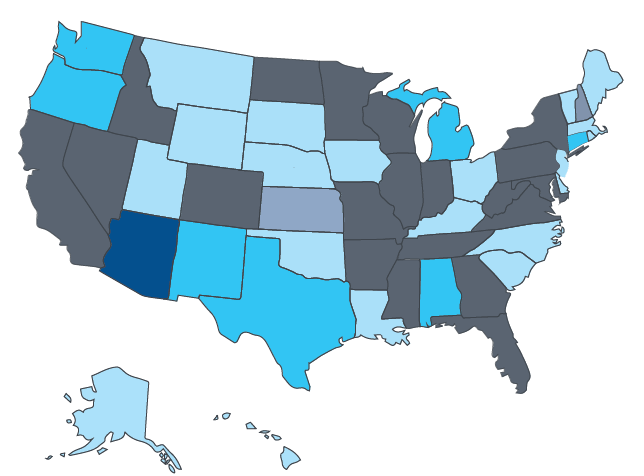2018 was heralded as a “Year of the Woman,” with a record number of…
By the numbers: women in executive office

In 2018, a record number of women were elected to Congress, and it was widely celebrated as a breakthrough year for women’s representation. But, this watershed moment did not reach the executive level.
It’s 2019, and the United States only has nine women governors.
 States that currently have a woman governor. Blue = Democrat, Red = Republican
States that currently have a woman governor. Blue = Democrat, Red = Republican
Twenty states have never had a woman governor.
In all of US history, only 44 women have ever served as governor of their state. The numbers are even more dramatic when it comes to diverse leadership, with only two states ever electing a woman of color governor and only 1 electing an openly LGBTQ woman governor.
While these numbers are slowly rising, they still don’t compare to the 2,300+ men who have served as governor.

States that have had a woman governor. Dark gray = have, Light gray = have not
Why do these numbers matter?
According to new Barbara Lee Family Foundation research, women face additional obstacles that men simply do not when running for office, and this is especially true at the executive level. Research shows that voters are more comfortable seeing a woman in a legislative body, but are less comfortable seeing her in an executive leadership position where she is the sole decision maker.
However, when voters see a woman in a leadership position, they are more likely to be comfortable voting for women in the future. When they can see first hand that women can effectively lead at the gubernatorial level, they are more open to seeing other women as viable candidates.
You can see this in the number of states that have had multiple women serve as governor:

Number of women governors by state
How can women overcome the obstacles on the road to executive office?
According to research from the Barbara Lee Family Foundation, this answer varies for candidates based on their party and background. The research examines how hypothetical Asian American, Black, Latina, lesbian, and white women candidates of both major parties can focus their energy on what makes them electable, qualified, and likeable in the eyes of voters.
To learn more about the road to executive leadership for women candidates, you can read the full report here.






